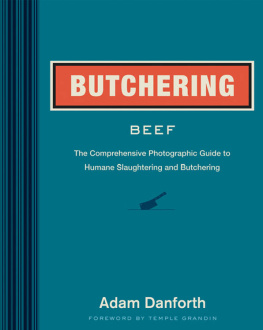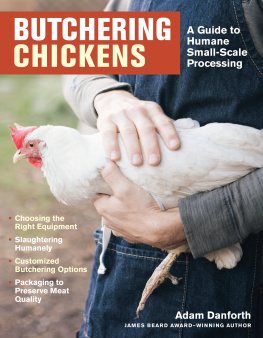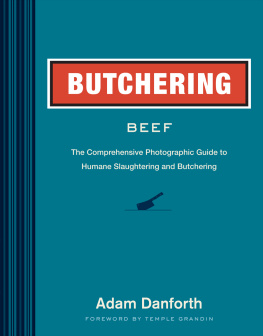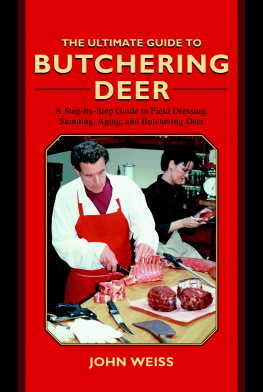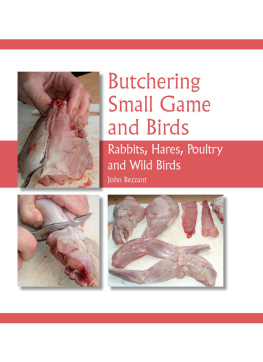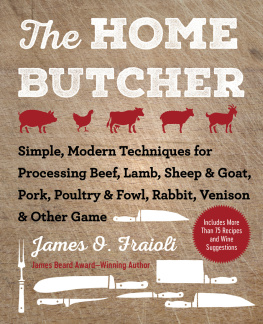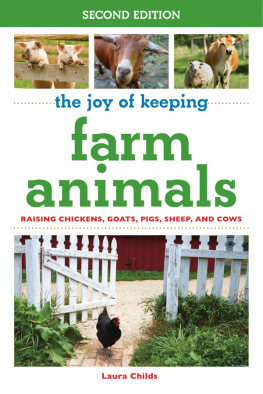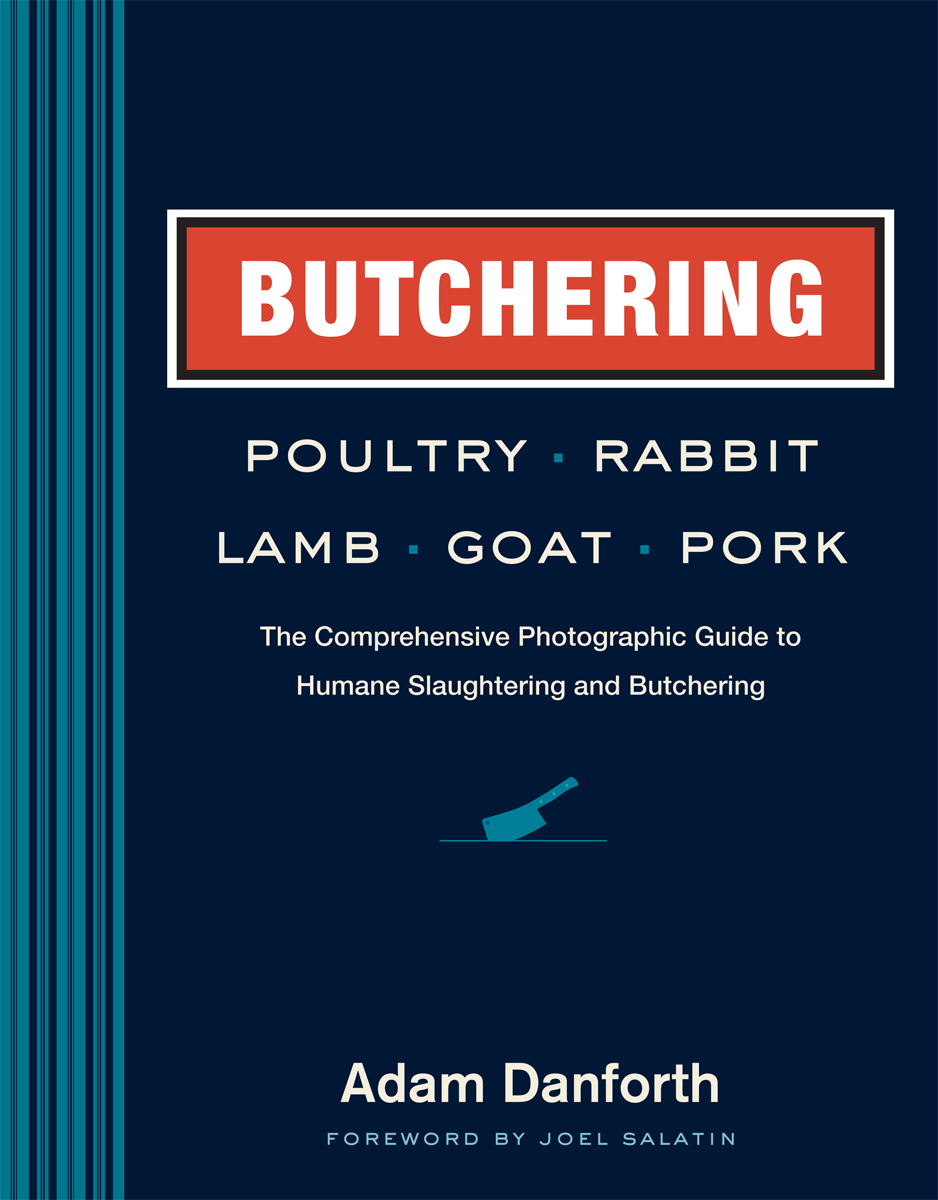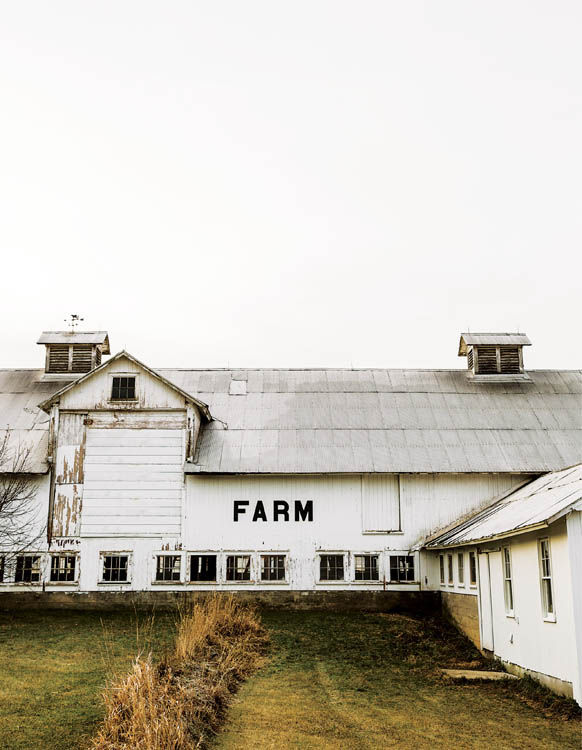dedication
For Moxie. I hope you feel comfortably known.
Contents
Foreword by Joel Salatin
Most Americans today fear food because they dont know much about it. But as we learn more and more about the shortcomings of industrial food, concentrated animal feeding operations (CAFOS), and the shenanigans of the food processing industry, we yearn for an antidote but dont know where to turn.
Our grandmothers and grandfathers werent afraid of food. They knew how to turn cucumbers into pickles (how many Americans dont even know pickles come from cucumbers?) and which vegetables could be root-cellared. Not too long ago, the shared agrarian understanding in the culture included knowing the difference between hay and straw, shoats and gilts, cows and heifers.
Today, farmers market shoppers looking through farmers scrap books routinely explain to their children that the cow with the horns is a bull. Of course, farmers know horns have nothing to do with sex and joke among themselves about how ignorant their customers are. When our farm began raising and butchering pastured poultry, every homemaker knew how to cut up a chicken. Today, most dont realize a chicken even has bones. I have to explain to them that chicken nuggets in the shape of Dino the Dinosaur is not a muscle group on a chicken.
Into this profound ignorance, timidity, and fear steps a delightful remedy from Storey Publishing and domestic artisan Adam Danforth. The book you hold in your hands is a recipe for self-reliance and faith rather than dependency and fear: faith in the ability of individuals thousands of them in their own backyards and homesteads to access natures bounty with home-scale meat preparation.
Unlike formal butchery textbooks, this one assumes beginner understanding, rudimentary equipment, and do-it-yourself (DIY) labor. The dramatic visceral photographs captivate the imagination. They draw you into the topic rather than repel. Indeed, this is exactly the kind of information that empowers people to try new things, that dispels the fears and anxiety, and that propels all of us to reconnect with our ecological umbilical.
I especially appreciate Storey and Danforth encouraging backyard butchery because it is exactly the kind of democratized, decentralized food system our country desperately needs. The opaqueness and centralization of Americas food system, from mono-speciated factory farms to mega-supermarkets, has birthed a brand new lexicon of pathogenicity, toxicity, and ills. While self-empowerment makes food regulators shudder (What, turn a bunch of novices loose with butchering animals in their backyards? Goodness, theyll kill themselves!) those of us who have done this for generations and encouraged others to do it realize the benefits for food safety, nutrition, and taste.
This book is yet another indication that the burgeoning local food tsunami continues to gain strength. It started with a resurgence of culinary interest and the Food Channel, then moved into urban farming and local produce, and now can include meat, which accounts for 40 percent of the grocery dollar. If were ever going to move our food system to a place of regeneration, accountability, integrity, and transparency, we have to tackle the issue of how meat is produced. This book, titled simply Butchering Poultry, Rabbit, Lamb, Goat, and Pork, is a launch pad for this next step in healing our collective foodscape.
If we wait for the government or land grant colleges or big food corporations to change, well be waiting a long time. Our cultures assault on humane livestock rearing, sanitary slaughtering, and processing with integrity can be corrected quickest when thousands of people, empowered by simple instruction, take control of their own meat and return to the social, small-scale artisanship of our forebears.
Using the best understanding of microbes, the latest knowledge regarding muscle development, the most modern infrastructure from cooling to knives, Danforth opens a world of can-do that invites the most timid onlooker to participate in this dramatic farm-to-plate choreography. Its a world of profound sacredness the sacrifice of life to sustain life. Perhaps few things can express ideas more clearly than personally taking up a knife and carving a carcass. While that may sound repulsive to some, for many of us, it speaks to a deep yearning, a primal call, to rediscover the foundations of human existence and the integrity of ecological cycles.
Because it is arguably the most nutrient dense of all foods, meat formed the basis of all ancient diets. In modern times, we have refrigeration, hot water, stainless steel, and efficient packaging materials that make this ancient art of butchering more efficient and safe. Preserving this tradition and explaining it to what is now a nation of novices, Danforths gift pushes us forward culturally and personally. Now that we have thousands of homesteaders growing critters, its time to encourage this legion of food participants to process them. Thank you, Adam, for showing us the way.
Introduction
There is no better location to harvest an animal than the land on which it lives. Youre present with the animal, in a calm, familiar environment, during its final moments. Natural surroundings reinforce the normalcy of one animals sacrifice for anothers existence. Earth cushions the hard fall of a stunned animal, preventing bruising. Blood fertilizes the field.
Honorable harvesting prioritizes the well-being of the animal; the process resembles nothing of the horror stories and horrific realities coming from inside improperly operated abattoirs or industrial-size slaughterhouses. When Im harvesting an animal, I feel right knowing that I have done everything I can to ensure a natural (albeit domesticated) existence and painless departure for any animal I process. This book will provide you with the same assurances.
Slaughtering an animal is not for everyone, and trepidation when beginning an education in this kind of work is to be expected. In fact, I would encourage it. A bit of uncertainty will make you slow down and will encourage you to deeply consider the importance of what is about to happen. Speed is for the machines. Act with intent and go slowly. Remember: preventing mistakes by practicing often and working with precision will increase efficiency more than working quickly will. At home there is no need to rush, either in raising the animal or in harvesting it. Slow growth yields a more flavorful meat and cautious processing yields a nourishing product.
For people raising animals for their own consumption and for those looking to purchase and process animals that have been raised locally, this book is the key to your food freedom. Everything you need to know in order to successfully and respectfully slaughter the most common species found on a farm is contained in these pages.
Youll learn exactly how to prepare animals for slaughter, how to set up a slaughtering and butchering area, how to select the tools and equipment youll need to ensure a successful slaughter, and, most importantly, how to stun and bleed animals with the certainty that they are experiencing the least pain and discomfort in these final moments of their lives.

